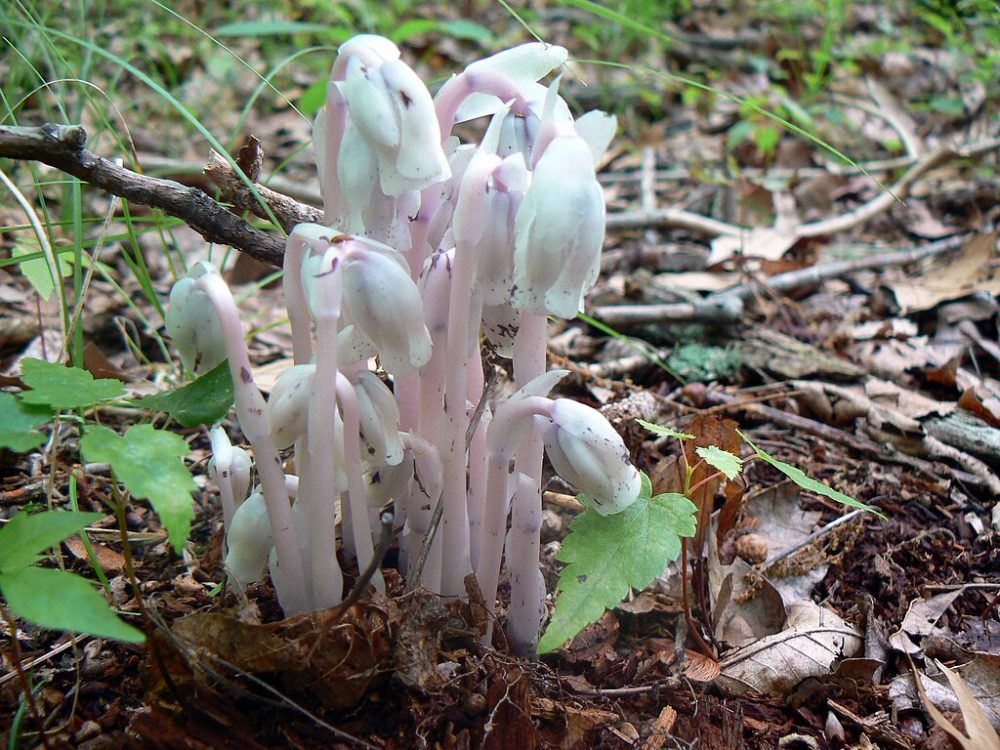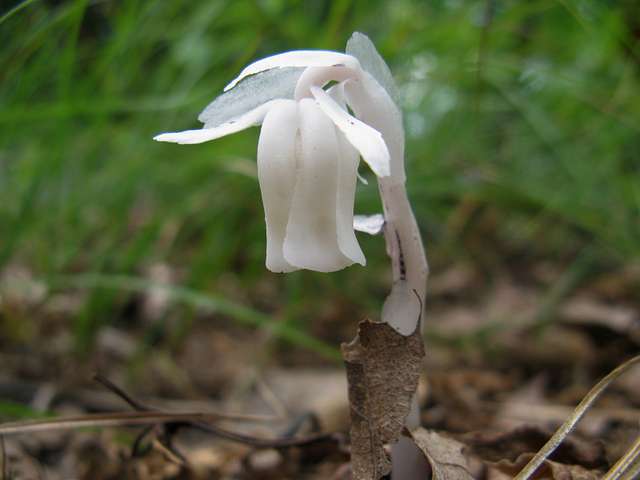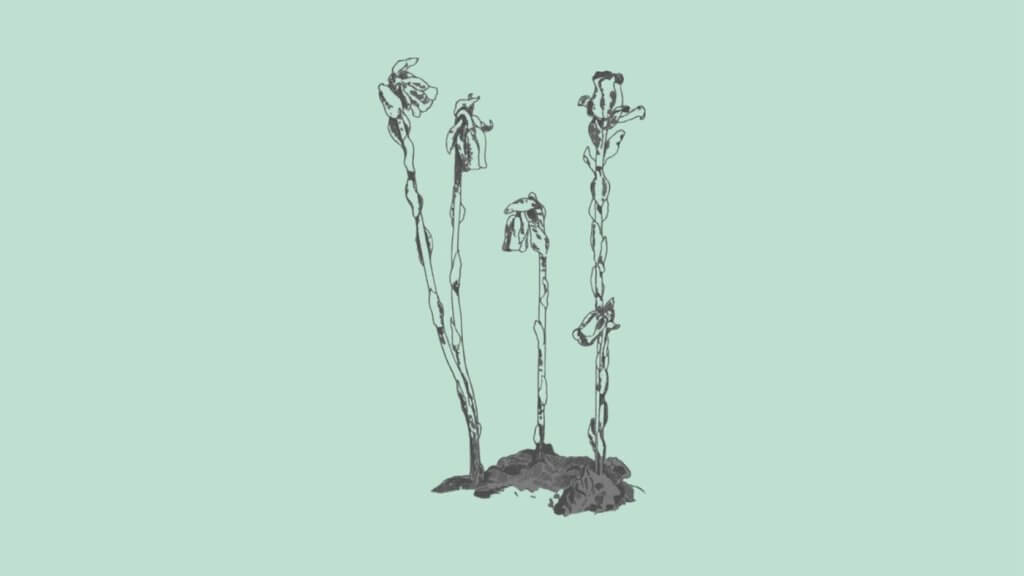Ghost pipe is a stunning and unusual native wildflower with a thick, white translucent stem and a white nodding flower. Be careful; eating the plant is not recommended due to its mild toxicity.
Monotropa uniflora plant profile
| Scientific name | Monotropa uniflora |
| Family name | Ericaceae |
| Plant type | Nonphotosynthetic perennial herb |
| Kingdom | Plantae |
| Genus | Monotropa |
| Phylum | Vascular plant |
| Habitat | Shady forests |
| Flower color | Pinkish or translucent white |
| Bloom time | July-September |
Common names include:
- Indian pipe
- Corpse plant
- Ghost pipe
- Ice plant
- Death plant
- Ghost flower
- Bird’s nest
What Is Ghost Pipe (Monotropa uniflora)?
Ghost pipe, scientifically known as Monotropa uniflora, is a unique and fascinating flowering plant found in North American forests.
Ghost pipe is known for its distinctive, ghostly white appearance. The entire plant lacks chlorophyll, giving it a translucent or waxy white color. It does not undergo photosynthesis.
What Are You Foraging For Right Now?
We're thrilled to hear your ideas. What would you like to submit today? Feel free to share your thoughts and experiences with us.
Instead, it relies on a mycorrhizal association with fungi for nutrients obtained from nearby trees.
Ghost pipe holds cultural significance in some Indigenous traditions, where it’s with specific rituals or beliefs. Some Indigenous beliefs connect ghost pipe to forest spirits or entities residing in wooded areas.

Why Is it Called Ghost Pipe?
The combination of its translucent, waxy appearance, nodding flower structure, and preference for shaded forest locations contribute to the plant’s name, ghost pipe. Is Ghost Pipe a Fungus?
Ghost pipe is not a fungus.
While ghost pipe may resemble a fungus, it is essential to recognize its identity as a non-photosynthetic flowering plant.
Where Is Ghost Pipe Found?
Ghost pipe is a native plant to temperate regions of North America, South America, and Asia, with very large gaps in between. This delicate and ethereal plant is quite rare to find.
Ghost pipe is frequently found in both deciduous and coniferous forests, especially near beech, oak, psruce and pine species. It thrives in the cool, shaded environments provided by the canopy of trees.
The plant tends to grow in rich, moist soils and in damp conditions. It prefers shaded locations within the forest.
How to Identify Ghost Pipe?
The ghost pipe plant is rather unique and can be easily identified by its translucent stem and translucent white or pinkish color. Also, it looks a bit like a tobacco pipe.
Ghost Pppe typically stands between 6 to 10 inches tall. The plant produces a single, nodding, flower-like structure with a solitary flower at the top. Ghost pipe lacks true leaves and stems. Instead, it has a central stalk that supports the flower.
Ghost Pipe is a perennial plant, but it may not always be visible above ground. It typically emerges in late spring to early summer and can persist into the fall.
It has translucent scale-like leaves arranged along the stem that measure less than an inch in length. As the leaves do not participate in photosynthesis, they are vestigial.
The Indian pipe bears a single white flower with 4 to 6 segments. There is only one flower on each stem of a plant.
Once pollinated by an insect, the flower appears like a shepherd’s hook but gradually straightens out. It is at this point that the stem becomes upright.
It usually blooms from late July through August, although it may appear as early as late June in some years.



How Rare Is a Ghost Pipe?
Even though ghost pipe grows wild throughout the United States (except in the Southwest), sightings are rare.
It emerges in late spring to early summer. Outside of this period, it can be challenging to spot.
This plant is perennial and will reappear in the same location each year.
Is Ghost Pipe Edible or Medicinal?
Ghost pipe is not considered a healthy edible, so you are probably better off avoiding eating it.
A few people have reported eating some, but nearly as many have reported feeling ill or strange after doing so.
There are several myths and questionable claims associated with this plant. The Indian pipe plant, for example, is often referred to as a hallucinogen by many people. There is no definitive answer to this question.
Is Ghost Pipe Poisonous in Any Way?
Ghost pipe contains compounds that may be harmful, and caution is advised regarding its consumption.
While the plant is not known to be highly toxic, it is considered potentially toxic and is not typically consumed as food.
Ghost Pipe Uses in Native American Culture
- Native Americans used ghost pipe tincture medicinally for its ability to treat both physical and emotional pain.
- In Cherokee culture, the root was used to prevent convulsions.
- In Mohegan culture, it was used for pain relief.
- In Cree culture, the flower was chewed to treat toothaches.
Other wild plants often used by Native Americans include:
Ana has always been interested in all things nature and flora. With her expertise in home gardening and interest in foraging, she has been spending her weekends and free time looking for edible native plants, flowers, and fungi. One of her many hobbies includes testing new savory and sweet recipes, juices or teas made from freshly picked plants, wild fruits, or mushrooms.

